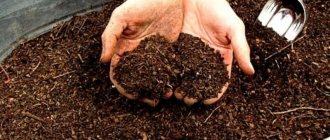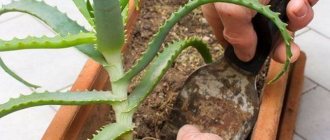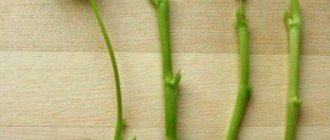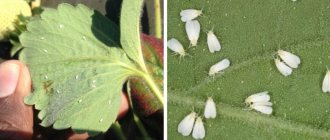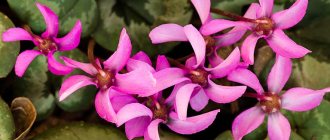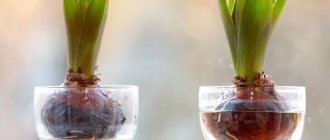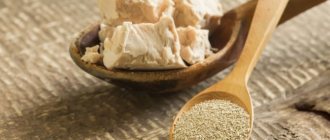Responsible step
Fertilizing in the spring is an extremely important agrotechnical procedure that provides a reliable foundation for the development of a luxurious flowering garden and vegetable garden, and guarantees the receipt of ripe, healthy fruits.
A deficiency of nutrient minerals in the soil causes many problems: plants weaken, often get sick and are unable to cope with difficult weather conditions. But it is also important to remember that an excess of minerals hides an even greater danger, both for botanical crops and for humans and the environment as a whole.
It is important to strictly follow the dosage of drugs and fertilizer application schedules, and in this matter, ready-made mineral complexes always win. It is impossible to calculate the exact amount of substances introduced with livestock products, because each farmer farms differently, and as a result, the component composition of the manure will be different. Ready-made fertilizers, which are offered by domestic and foreign industry, have a clearly regulated set of components in strict proportions, which will allow you to avoid mistakes with the dosage. So don’t be upset about the lack of organic matter, but let’s take a closer look at how you can fertilize the soil besides manure.
Alternative ways to fertilize the soil
The question of whether it is possible to fertilize the land without using manure worries many. The answer is of course yes. A tincture of nettle or any weed that you have on hand has a good effect on the soil.
To do this, you need to place it in a container with clean water for a couple of days. Just be prepared for the fact that such a tincture will definitely emit the characteristic unpleasant smell of the well-known manure.
Another valuable fertilizer today is ash. It contains a complex of microelements necessary for plants in an easily digestible form. It is advisable to add ash before starting to dig the ground. In this case, its distribution will be as uniform as possible.
In any case, fertilizing the plants on the site should always occur in a timely manner and in the required quantities. It is very important to monitor the dosage so that the soil does not become oversaturated.
Planting trees on the siteKerria or Keria: photo and description of the shrub, rules and subtleties of growing a plant with yellow flowers
Ornamental shrubs in landscape design blooming in autumn
By following the above rules, your garden will always be not only well-groomed, but also fertilized. For those gardeners who are tired of routine work in the garden and constant digging of the soil, it is important to know that you can always switch to natural farming. It makes it possible to reduce the number of labor-intensive operations and increase soil fertility using more humane methods.
Options to choose from
Top dressings popular in gardening can be divided into three large groups:
- Natural organic preparations of natural origin - in addition to manure, these also include: compost, peat, wood ash, green manure and even banal green manure.
- Mineral complexes are one-, two- and multi-component compositions containing various macro- and microelements: phosphorus, potassium, nitrogen, as well as molybdenum, zinc, copper, iron, calcium, etc.
- Combined products that include both organic and mineral preparations, as well as a number of vitamin complexes, humates and humins, and other useful components.
Benefits of homemade fertilizers
The beneficial properties of homemade organic fertilizers are undeniable:
- Lack of chemical composition;
- Availability of components;
- Ease of manufacture;
- Quality control of all production processes;
- Financial savings.
This is sufficient motivation to prepare mineral fertilizer for your plants.
Organic Substitutions
A clear advantage of using these substances is the ability to grow an absolutely healthy and environmentally friendly crop. When it comes to the question of how to fertilize the soil in the spring if there is no manure, the best substitutes are the following.
Compost is the most inexpensive and easiest way to replace mullein, but it is quite labor-intensive and time-consuming. The basis of the compost pit is layers of organic plant residues (tops, garden herbs, foliage, sawdust, peat bog), processed under the influence of beneficial microorganisms for 9-12 months. Periodic mixing of the contents of the pit (3-5 times per season), as well as the use of special catalysts such as “Compostin”, etc., will help speed up the maturation of compost. Ready-made compost is used during spring plowing, at the rate of 0.5-1 bucket per square plot.
Vermicompost is a product of the processing of organic residues by Californian earthworms. The process goes twice as fast as in a compost pit, while only 1 kg of the finished substance easily replaces up to 10 kg of manure.
Peat - this substrate itself contains practically no useful components, but adding it to the soil mixture in the garden and garden changes the structure of the earth, increases the breathability of the soil and improves the ability to absorb moisture. Peat will be an ideal component for crops that prefer slightly acidic soils: many fruit and berry plants, tomatoes, etc. Peat is also an integral part of the compost heap.
Sapropel (river silt) - is formed as a result of the decomposition of algae and inhabitants of fresh water bodies. The substance, rich in organic matter, is well suited for cultivating the garden in the spring, especially on sandy soils and sandy loams, since it has moisture-retaining properties and does not change the environment.
Eggshells are rich in calcium, which is important for the proper development of all plants. It is thoroughly washed, dried and crushed into fine grains, scattered around the tree trunks of fruit trees or poured into shallow trenches along future plantings.
Green fertilizer is an aqueous infusion of herbs (nettle, clover, calendula, potato tops, etc.), which is kept warm for 8-10 days, and then, diluted to a concentration of 1 to 5, used as root dressing and leaf fertilizer.
Wood ash is a good alkalizing component, rich in potassium. It has a dual function, being both a fertilizer and an insecticide. Spray the area in dry form (150-200 g per hundred square meters) or introduce it in dissolved form (the same concentration per bucket of water). Cruciferous crops (all types of cabbage) and berry crops respond well to fertilizing with ash.
Green manure is a natural source of nitrogen. Useful herbs (lupine, peas, clover, alfalfa, etc.) are sown along the row spacing, and before flowering they are mowed and spread as mulch.
We protect from pests
Synthetic pest control products can be potentially hazardous to health as they contain harmful substances. But you can also find natural substitutes for such products. For example, you can treat plants with infusion of ash or tobacco dust. To prepare the infusion, sift 1 glass of wood ash through a sieve, add a liter of water, boil, let it brew for a while and dilute it in a bucket of water. The leaves of plants are sprayed with this solution. To make the drug stick better to the leaves, you can add 1 tablespoon of any detergent to the infusion - dishwashing liquid, laundry soap, etc. By the way, this infusion helps not only against pests, but also against some fungal diseases of plants.
Of course, the effectiveness of folk remedies depends on the type and number of pests. Sometimes plants are so heavily infected that it is impossible to do without synthetic products. Therefore, it is better to prevent pests from invading your beds. And for this you need to properly organize the plantings. Use raised beds in wet areas, low ones in dry soils, protect plants on the north side from the wind with screens or fences, do not thicken the plantings and do not overuse exotic plants.
Can I be fined for using manure? More details
Safety precautions . It is necessary to have time to process most plants before the flowers appear. You cannot use synthetic pest repellents during the period of flowering and ovary formation, otherwise most of the harmful substances will get into the fruit. Apple and pear trees can be processed after the ovaries have formed, but not “by flowers”. But garden strawberries, raspberries and other berries with rapid ripening are processed in advance. As for natural pest repellents, they are not so dangerous, but harmful substances may be present in them. Therefore, berry crops are treated in the spring, before the flowers appear, and vegetables, such as cucumbers or tomatoes, are sprayed with an infusion of ash throughout the summer, but trying to make sure that the infusion does not get on the flowers and fruits.
Mineral fertilizers for the garden in spring
It is easier to use ready-made drugs, because to calculate the correct dosage, you just need to follow the instructions on the package exactly. Before spring digging, you can apply any chemicals even in dry form, simply scattering granules (powder) over the field, followed by embedding the substances deeper.
The main active component for plants in the spring is nitrogen, as well as the potassium-phosphorus complex, therefore, in the question of how to fertilize the soil, in addition to manure, it is appropriate to add multicomponent fertilizers like “Nitroammofoska” or “Nitrophoska”, as well as one- and two-component mixtures: “Potassium Monophosphate” , “Diammofoska”, “Superphosphate” simple or double, “Precitate”, “Kalimagnesia”, potassium nitrate, as well as “Urea” (urea), ammonium nitrate, etc.
Special mixtures for specific crops are extremely popular: “Berry”, “For Tomatoes”, “Cabbage”, etc.
It is better not to use chlorine-containing preparations (potassium chloride, etc.) in the spring, since this element is not beneficial and contributes to a change in the flavor and aromatic complex of berries, melons, and potatoes.
Nitrogen will allow plants to actively gain green mass, because in case of deficiency of this element, any botanical crop stops growing, the foliage loses its green color, turns pale and shrivels.
Potassium will help crops strengthen their immunity, develop solid disease resistance, and survive droughts and frosts. In addition, the element improves the commercial properties of the crop, increases the sugar content of fruits and berries, and enhances the natural aroma.
Phosphorus plays a leading role in the formation of the root system, and is also important for the development of a powerful above-ground part of plants.
Mineral fertilizers are applied to the soil in advance, before digging or immediately at the time of planting seedlings or sowing seeds. The concentrations of the drugs differ, since spring plowing takes place 1-1.5 months before planting. As soon as the snow melts and the average daily air temperature is set at +5 °C, you can apply the following to each square of the site:
- 50-75 g phosphorus,
- 45-60 g potassium,
- 25-40 g of nitrogen.
To ensure 100% absorption of minerals, it is recommended to add substances in a special chelate form.
It is convenient to apply any other microelements in the form of foliar sprays on the leaf, for which the powder of boric acid (1-2 g per liter of water) or manganese (0.1-0.5 g) is dissolved and irrigated on each bush. Copper or iron sulfate is also used. At the same time, a dual approach is ensured: feeding and disease prevention.
Fertilization is a necessary procedure for plant growth
Fertilizing is a necessary procedure for plant growth.
A good housewife who has flowers in her house must understand that they need to be replenished with nutrients and useful elements. Thus, regular application of fertilizers will ensure good growth. Fertilizer application is a necessary procedure for plant growth.
Indoor pets are always fed additionally, as well as crops that grow in the fresh air. Useful components help vegetation to actively develop. And only the housewife can show responsibility and supply the flowers with the necessary substances. Fertilizing should not be considered as a growth stimulator and maintenance of decorative characteristics. There is much more to it than this - this supply of nutrients helps support the life cycle of plants. Without feeding, they can die.
Substances needed for indoor flowers:
- Potassium
- Phosphorus
- Nitrogen and other compounds
But do not forget that certain plants have their own preferences, and the composition of fertilizers must be carefully studied. If we consider the issue of an ideal approach to a plant from the side of feeding, then the key to success always lies in the “golden mean”. Fertilizers should not have a complex composition, and stability in observing feeding conditions will be the best option for a housewife. Excessive feeding will never be beneficial for your green pets.
Combination drugs
In terms of how to fertilize the land other than manure, multicomponent organomineral fertilizers have proven themselves well.
“Agrovit Kor” is a humus-forming fertilizer containing organic matter (peat, brown coal, amino acids) and minerals (balanced set), which promotes accelerated growth and strengthens plant immunity, as well as improving soil structure. There are universal and specific series.
"Bona Forte" - fertilizers contain chelated forms of minerals, which are most easily absorbed by any botanical crops. The composition also contains vitamins and other vital substances.
"Fertika" - multi-component mixtures for the full development of plants of any species and varieties, which help increase productivity, ensure environmental safety and improve product quality.
It is always possible to replace manure, but it will hardly be possible to do without additional nutritional supplements. Each presented preparation differs in composition and ensures the effectiveness of plant development to a greater or lesser extent. It is important to strictly follow the breeding instructions and then you will be able to grow a truly luxurious garden and vegetable garden.
We fight weeds
The best and safest replacement for herbicides is weeding. The secret is regularity. If you rarely weed your beds, even herbicides that act only on existing weeds but do not protect against the appearance of new ones will not help.
Article on the topic
Let's feed the tomatoes. Why fertilize your garden beds with fish? You can also use dry grass clippings, rotted compost or manure. All this is poured onto the beds (under strawberry and raspberry bushes). Grass or compost is a good plant food and also slightly inhibits the growth of weeds. True, this remedy only works on annual weeds. Perennial “invaders” have too powerful and deep roots, and poured grass will not interfere with their growth.
But newspapers or cardboard, which some gardeners use to cover their beds to protect them from weeds, are not the best remedy. This is very unaesthetic, and besides, slugs and snails feel great under such cover. Black film is also not a very good option. The soil under it is overheated, the film does not allow moisture to pass through well, but does not inhibit the growth of weeds.
If you really want to cover the garden bed with something, you can use polypropylene awnings or black geotextiles. These materials allow water and air to pass through well and prevent weeds from growing. But such material is not without its drawbacks. Ants often find shelter under it, and it also promotes the proliferation of fungi in the soil.
It is also necessary to mow the lawn regularly (once a week) and mow the grass around the area so that weeds do not have time to bloom and acquire seeds.
Lunch for the garden. How to properly feed plants in June Read more
Safety precautions . If you use synthetic herbicides, wear gloves, goggles and protective masks when working with them. Wash your hands thoroughly after handling these products.
The best fertilizers for indoor plants
Fertilizing Houseplants
It is important for indoor plants to maintain a balance of minerals and other nutrients. Therefore, when choosing fertilizers, you need to be careful and consider the best products. Popular fertilizers have been described above. Among them there are several options.
The best fertilizers for indoor plants and flowers:
- Fertika Lux is a Russian and high-quality manufacturer of fertilizers for indoor plants. The mixture is easy to dilute. It is used sparingly and contains no chlorine.
- Etisso - used for flowering plants, makes the color rich, stimulates the duration of flowering. The product contains all the necessary substances that provide high efficiency for crop growth.
- Pocon - used for plants in pots, helps to actively grow and bloom. The product has a balanced composition and plays a primary role in the good functioning of flowering plants at home.
It is necessary to purchase fertilizers only in specialized stores. Thanks to this, the housewife will find an effective remedy and will be able to competently support the active life of the plant.
Feeding schedule for house plants and flowers
A pre-drawn schedule will allow the housewife to correctly apply fertilizer to house plants and flowers. It is worth determining a schedule of procedures for each crop separately. To draw up such a schedule, for example, for a year, it will not take much time. But thanks to this, the housewife can be sure that certain vegetation in the house will receive all the important components when needed.
What should be included in the schedule:
- Nutrient feeding period
- Treatment frequency
- Dose and type of feeding
If you combine all the indicators into one system, you will be able to build an effective graph that will help. In this case, the plants will be able to feel comfortable and will receive the necessary elements according to the compiled table.
